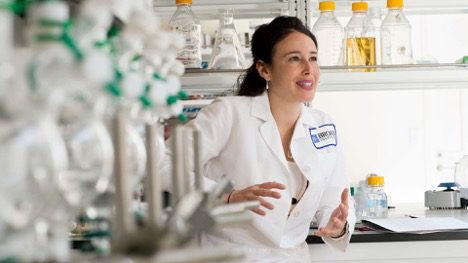“The sequencing of the human genome — and subsequently these cancer genomes — has immeasurably advanced our understanding of the molecular and genetic underpinnings of cancers, including osteosarcomas.”
Cigall Kadoch, PhD
Most human disease is centered on problems in gene regulation, and the most pronounced place in which this is true is cancer. Cancer is often the result of a normal cellular pathway or developmental process that at some point acquired a mutation or defect that made that cell unable to become or maintain its proper functioning self.
“This is why my focus as a scientist is on how to reverse aberrant or faulty gene regulation,” says Cigall Kadoch, PhD, associate professor of pediatric oncology at the Dana-Farber Cancer Institute and Harvard Medical School, and a leading expert in chromatin and gene regulation. “We are trying to uncover new ways to control or reverse faulty processes that have made the topology of our genomes and gene expression go awry.”
In 2014, Dr. Kadoch, who is also a founding member of the Osteosarcoma Institute’s Strategic Advisory Board, created her lab to study how cells control gene expression; that is, which genes of our some 20,000 genes encoded by the human genome are turned on and off, and the timing of these switches. What controls this? Protein factors — single proteins or protein complexes — that essentially “sit down” on our genetic code (DNA) and regulate its accessibility, “openness,” and dictate the degree to which a gene on that stretch of DNA is turned on or off.
This rapidly evolving field of science is called epigenetics, or chromatin biology. Dr. Kadoch’s lab focuses on studying the structure and function of one family of epigenetic regulators, called chromatin remodelers, with the goal of defining the mechanisms that underlie specific cancers and using these new insights to inform novel cancer treatments. Furthermore, she and her team leverage precision medicine, i.e., patient-specific genetics, in informing the mechanisms at play and the potential therapeutic opportunities.

The Blueprint for Life
DNA is the code for life.
“It gives us the blueprint for how to function, an instruction manual if you will, but that’s not the whole story,” Dr. Kadoch says. “An instruction manual needs to be read and interpreted to turn into a successful project. Similarly, the expression of those genes is what dictates how every single type of cell within your body functions. And, as such, disruption of how the genes are actually expressed or how the instruction manual is read and interpreted can have disastrous consequences, including cancer.”
Much of the inspiration behind Dr. Kadoch’s work comes from exome- and genome-wide sequencing efforts that have transformed how we think about and understand the genetic basis for cancer. They inform what processes have gone wrong.
“We researchers are the recipients of such sequencing data, and we can glean a lot of information,” she says. “The sequencing of the human genome — and subsequently these cancer genomes — has immeasurably advanced our understanding of the molecular and genetic underpinnings of cancers, including osteosarcomas. And we continue to go back to that because that is the foundation for much of the work that we do.”
What Dr. Kadoch and her lab have learned from a decade-plus effort of human sequencing studies is that one of the top determinants of human cancer is mutations in genes that encode epigenetic factors.
“These epigenetic factors dictate which areas of our DNA should be nice and open, so that genes can turn on,” she says, “and which parts of the genome are wrapped up together like a tangled telephone cord, making them inaccessible to turn those genes on.”
Osteosarcomas have many different compositions of gene mutations and gene expression levels, not a single cause. This is what makes this cancer so hard to effectively treat. Personalized genetic medicines may be able to suggest new strategies to “rewire” the imbalances in gene expression found in osteosarcoma.
Personalized Genetic Medicine
We need to treat osteosarcoma tumors in different ways with different types of medicines.
“We would love to get to a point in oncology, where we can say, ‘For this mutation or set of mutations, and this kind of disease composition, the best treatment for the patient is this,’” says Dr. Kadoch. “So far, we haven’t reached that stage, but we’re getting closer.”
Though there is still much to learn about the mechanisms of osteosarcoma and osteosarcoma treatment, technology is advancing every day that will hopefully fill in the gaps of what we don’t yet know. Genetics in human cancer has opened a world of new opportunities and new information. And these discoveries are just the tip of the iceberg.
“I really believe that over the coming years,” says Dr. Kadoch, “the combination of technology development and new detailed mechanistic understanding, coupled with the talent and dedication of our board members, grant recipients, and the many doctors and scientists in our extended network will play a key role in driving OSI’s key mission forward.”
Read more stories about the people powering OSI in The Frontline, our monthly newsletter. Click here to subscribe.
